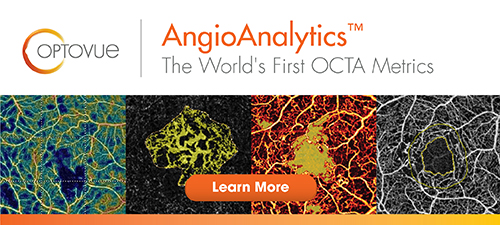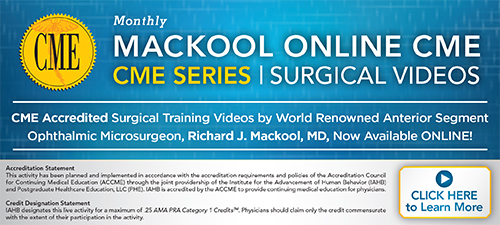FROM THE EDITORS OF REVIEW OF OPHTHALMOLOGY:

Volume 18, Number 33 |
Monday, August 13, 2018 |
|
AUGUST IS CHILDREN’S EYE HEALTH/SAFETY MONTH |
|
||||
|
Visual Outcomes & Intraoperative Complications of Post-vitrectomy Cataract Surgery Scientists analyzed the visual outcomes and rate of intraoperative complications of phacoemulsification surgery after prior pars plana vitrectomy, as part of a retrospective, multicenter database study. They included eyes that underwent phacoemulsification between June 2005 and March 2015 at eight sites in the United Kingdom.
The rate of posterior capsular rupture was not different between prior PPV (1.5 percent) and non-vitrectomized (1.7 percent) groups, but the incidences of zonular dialysis (1.3 percent vs. 0.6 percent) and dropped nuclear fragments (0.6 percent vs. 0.2 percent) were higher in the prior PPV group (p<0.0001). The mean time interval between PPV and cataract surgery was 399 days.
|
|
| SOURCE: Soliman MK, Hardin JS, Jawed F, et al. A database study of visual outcomes and intraoperative complications of postvitrectomy cataract surgery. Ophthalmology 2018; July 21. [Epub ahead of print]. |  |
|
Anti-VEGF Therapy in DME: Real-world Outcomes Researchers assessed real-world visual acuity outcomes of anti-vascular endothelial growth factor therapy for diabetic macular edema. They performed a retrospective analysis on the Vestrum Health Retina Database of aggregated, longitudinal electronic medical records from a geographically and demographically diverse sample of cases of U.S. retina specialists.
|
|
| SOURCE: Ciulla TA, Bracha P, Pollack J, et al. Real-world outcomes of anti-vascular endothelial growth factor therapy in diabetic macular edema in the United States. Ophthalmology Retina 2018; July 28. [Epub ahead of print]. |  |

|
|
 |
|
Review of Ophthalmology® Online is published by the Review Group, a Division of Jobson Medical Information LLC (JMI), 11 Campus Boulevard, Newtown Square, PA 19073. To subscribe to other JMI newsletters or to manage your subscription, click here. To change your email address, reply to this email. Write "change of address" in the subject line. Make sure to provide us with your old and new address. To ensure delivery, please be sure to add reviewophth@jobsonmail.com to your address book or safe senders list. Click here if you do not want to receive future emails from Review of Ophthalmology Online. Advertising: For information on advertising in this e-mail newsletter or other creative advertising opportunities with Review of Ophthalmology, please contact sales managers James Henne or Michele Barrett. News: To submit news or contact the editor, send an e-mail, or FAX your news to 610.492.1049 |


